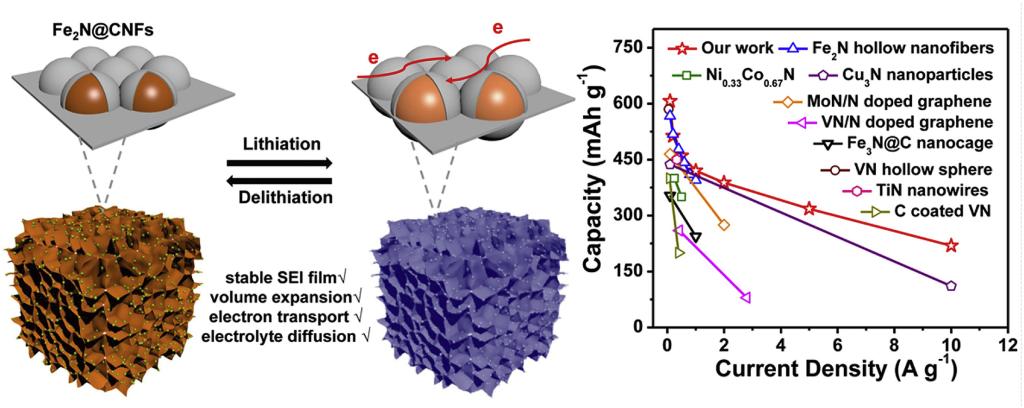Y.F. Dong, Y. Li, H.D. Shi, J.Q. Qin, S.H. Zheng, R.H. He, Z.-S. Wu∗
Carbon, 2020, 159, 213-220.
DOI: 10.1016/j.carbon.2019.12.041 [PDF]

Metal nitrides with high theoretical capacities and exceptional electrical conductivities hold great potentials as high-rate anode materials for lithium ion batteries (LIBs), but suffer from severe pulverization and air instability of electrodes. Herein, we developed a general strategy for synthesizing few-layer graphene encapsulated transition metal nitride (e.g., Fe2N) nanoparticles confined in three dimensional (3D) ultrathin carbon nanosheet frameworks (denoted as Fe2N@CNFs)viathe iron nitrate accelerated polyvinylpyrrolidone (PVP) blowing and subsequentin-situnitridation process, as high-rate anode for LIBs. Benefiting from the well-confined Fe2N nanoparticles by graphene shells for alleviating structural pulverization and air sensitivity, and 3D carbon nanosheet porous frameworks for fast electrolyte ion diffusion and fast electron transport, the resulting Fe2N@CNFs anodes exhibited high reversible capacity of 587mAh g−1at 0.1Ag−1, and remarkable rate capacity of 215mAh g−1at high current density of 10Ag−1, outperforming most reported metal nitride electrodes. When coupled with carbon-coated LiFePO4cathode, the resulting full LIBs still delivered an initial discharge capacity of 243mAh g−1at 0.1Ag−1. Therefore, this work will pave a new way for rational construction of a series of high-performance metal nitride electrodes for energy-related devices.